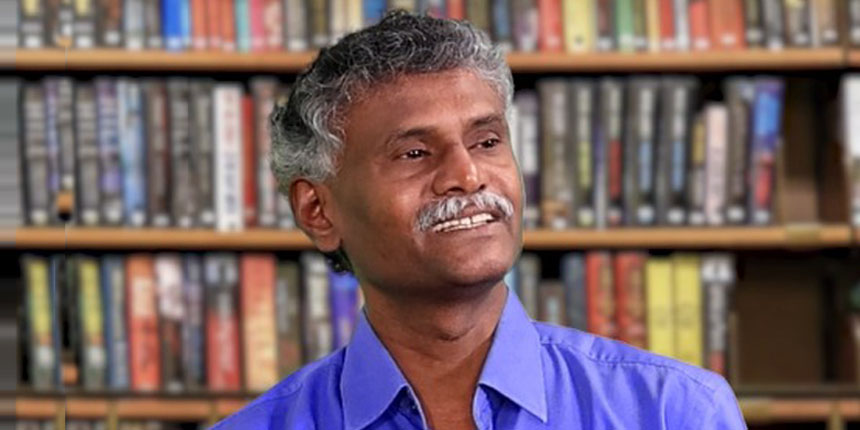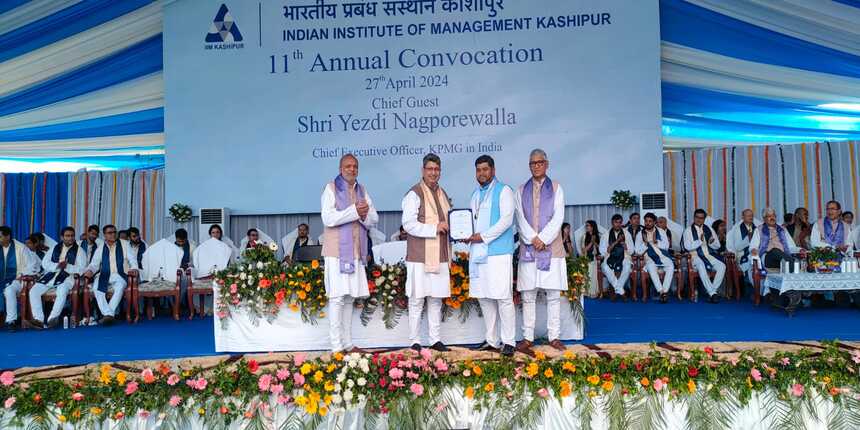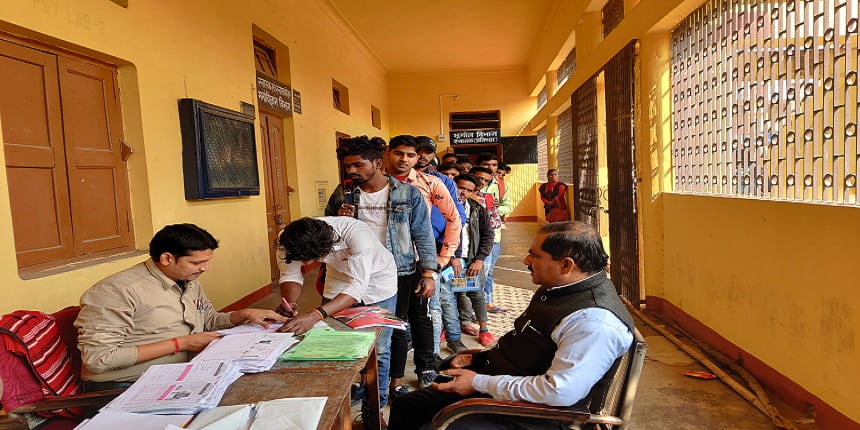NEP 2020 gives a fresh boost to multilingual education in Indian schools, writes NCERT professor
‘The NEP 2020 liberates the three-language formula by making it flexible to accommodate Indian languages....This promotes all Indian languages in school education.’
 Ramanujam Meganathan professor of English in the Department of Education in Languages, NCERT.
Ramanujam Meganathan professor of English in the Department of Education in Languages, NCERT.Team Careers360 | February 21, 2024 | 05:43 PM IST
By Ramanujam Meganathan
India’s pluralism is marked by her linguistic diversity. According to the 2001 Census, India has 1,652 languages belonging to five different language families – Indo-Aryan, Dravidian, Austro-Asiatic, Tibeto-Burmese and Semito-Hamitic. Census 2011 lists 122 languages and 234 mother tongues belonging to the five language families. The Constitution of India recognises 22 languages as ‘recognised languages’ of India in its 8th Schedule.
About 87 languages are used in print media, 71 are used on the radio, the administration of the country is conducted using 15 languages, and 47 languages are used as the medium of instruction in schools. The Indian currency is bilingual — in Hindi and English — but has its denominations mentioned in 15 languages. Articles 343-351 of Part XVII and the 8th Schedule of the Constitution of India are on the issues of languages of the country.
Hindi is our official language and English is our associate official language. The language issue in this country remains a matter of concern as many of the tribal, minority and minor
languages are yet to find a place in school education.
Medium of instruction
Developments since the liberalisation of the Indian economy in the 1990s placed Indian languages in a spot. Tribal and minor languages face double disadvantage – one, directly from the major state language and another, from the English language – as the speakers of these languages themselves lose opportunities to study in the language in schools. English is the medium of instruction in the majority of higher education institutions and the language is making headway in school education too.
Over the last two decades, at least 20 languages have been thrown out of the school system as a medium of instruction. The NCERT’s All India School Education Surveys, conducted in 1993 and 2004, show that the number of languages used as the medium of instruction in the 1990s was 60 and by 2002 it was 47. This has happened despite the efforts to provide primary education in the languages of children.
India’s language-in-education policy, the “three-language formula”, recommends the study of at least three languages in the span of 10 years of schooling.
Also read Dharmendra Pradhan launches Bharatiya Bhasha Utsav in line with NEP 2020 vision
NEP 2020: Three-language formula
The National Education Policy (NEP) 2020 aims to fulfil the long-cherished dream of bringing Indian languages into school education. First, the NEP liberates the three-language formula by making it flexible to accommodate Indian languages.
The policy states: “The three-language formula will continue to be implemented while keeping in mind the constitutional provision, aspiration of the people, regions and the union, and the need to promote multilingualism as well as promote national unity. However, there will be greater flexibility in the three-language formula, and no language will be imposed on any state. The three languages learned by children will be the choices of the states, regions, and of course the students themselves, so long as at least two of the three languages are native to India”.
This paves the way for autonomy of states and school systems to choose the languages to be taught. Focusing on mother tongue or the local language, the state or school system can choose the other two languages with the condition that “two of the three languages should be Indian languages”. This promotes all Indian languages in school education.
Second, the NEP also advocates for the study of foreign languages from middle school, Class 6 onwards. Which are the foreign languages? In addition to high-quality offerings in Indian languages and English, foreign languages, such as Korean, Japanese, Thai, French, German, Spanish, Portuguese, and Russian, will also be offered at the secondary level. This will allow students to learn about the cultures of the world, enrich their global knowledge, and enhance their mobility according to their interests and aspirations.
Third, NEP 2020 recommends the study of classical languages – Sanskrit, Tamil, Telugu, Kannada, Malayalam and Odia – as additional optional languages for (at least) two years between Classes 6 to 12 with the option to continue from the middle stage through the secondary stage and beyond.
NEP 2020: Multilingual education
Enabling every Indian child to be multilingual is the overarching vision of the policy. All children begin their schooling in their mother tongue and move on to add many more languages by the time they complete their school education. The languages which children learn under the three-language formula in school include two Indian languages (starting with mother tongue, home language or state language) and any other foreign language, which now happens to be English as English has become a common second language across the country over the last five decades.
In addition to the three languages, students will also have the choice to learn a foreign language and a classical language. This makes the language education in school truly multilingual.
The union government has launched a number of initiatives to promote Indian languages in schools. These include the Bhasha Sangam initiative. A part of the Ek Bharat Shreshtha Bharat programme, it employs audio, video and multimedia technology to promote Indian languages. Initially, five sentences in the 22 scheduled Indian languages are available in the respective Indian languages – say, Marathi or Tamil – and in Hindi and English. School students practise the sentences in order to get familiarised with all the Indian languages as also with the Indian Sign Language (ISL). The materials are available at the Diksha portal in audio, video and text form.
Also read NCERT developing courses for parents, teachers to learn 22 Indian languages
National Curriculum Framework
The National Curriculum Framework for School Education (NCFSE) 2023, which is under implementation, gives central importance to language learning across all stages, from foundational to secondary, to realise the vision of the NEP 2020.
The NCFSE delineates the aims of language education, the nature of language, current challenges within school education, learning standards for each stage with illustrative learning outcomes for each class, how textbook content and other learning materials must be selected, suggestive pedagogical processes, and assessment strategies. The above aspects are provided for teaching-learning of languages under the three-language formula.
This is the time of hope and confidence for language education ensuring every child’s right to learn their languages and learn many more to become multilingual for a multilingual country.
Ramanujam Meganathan is a professor of English in the Department of Education in Languages, National Council of Educational Research and Training (NCERT)
Follow us for the latest education news on colleges and universities, admission, courses, exams, research, education policies, study abroad and more..
To get in touch, write to us at news@careers360.com.




